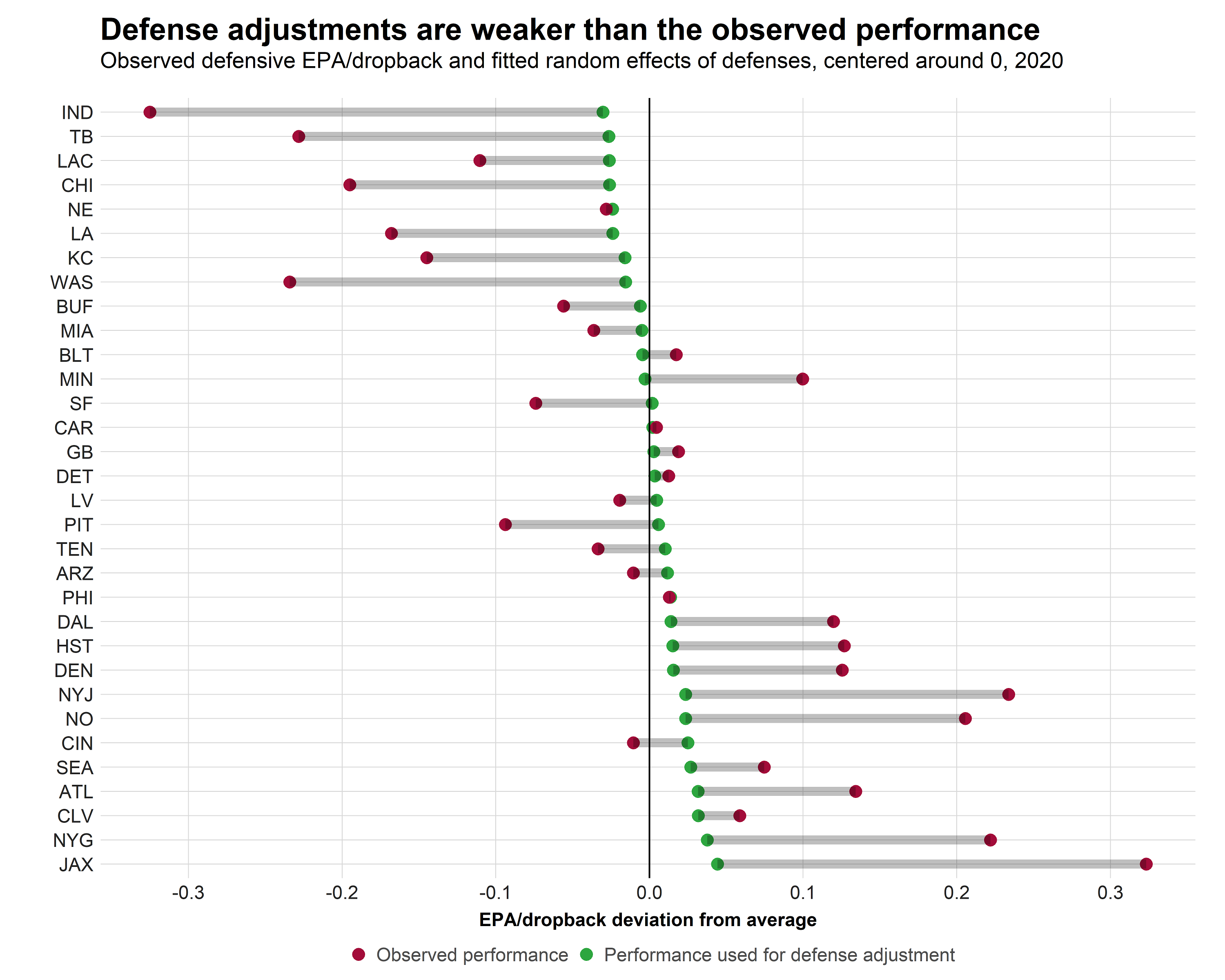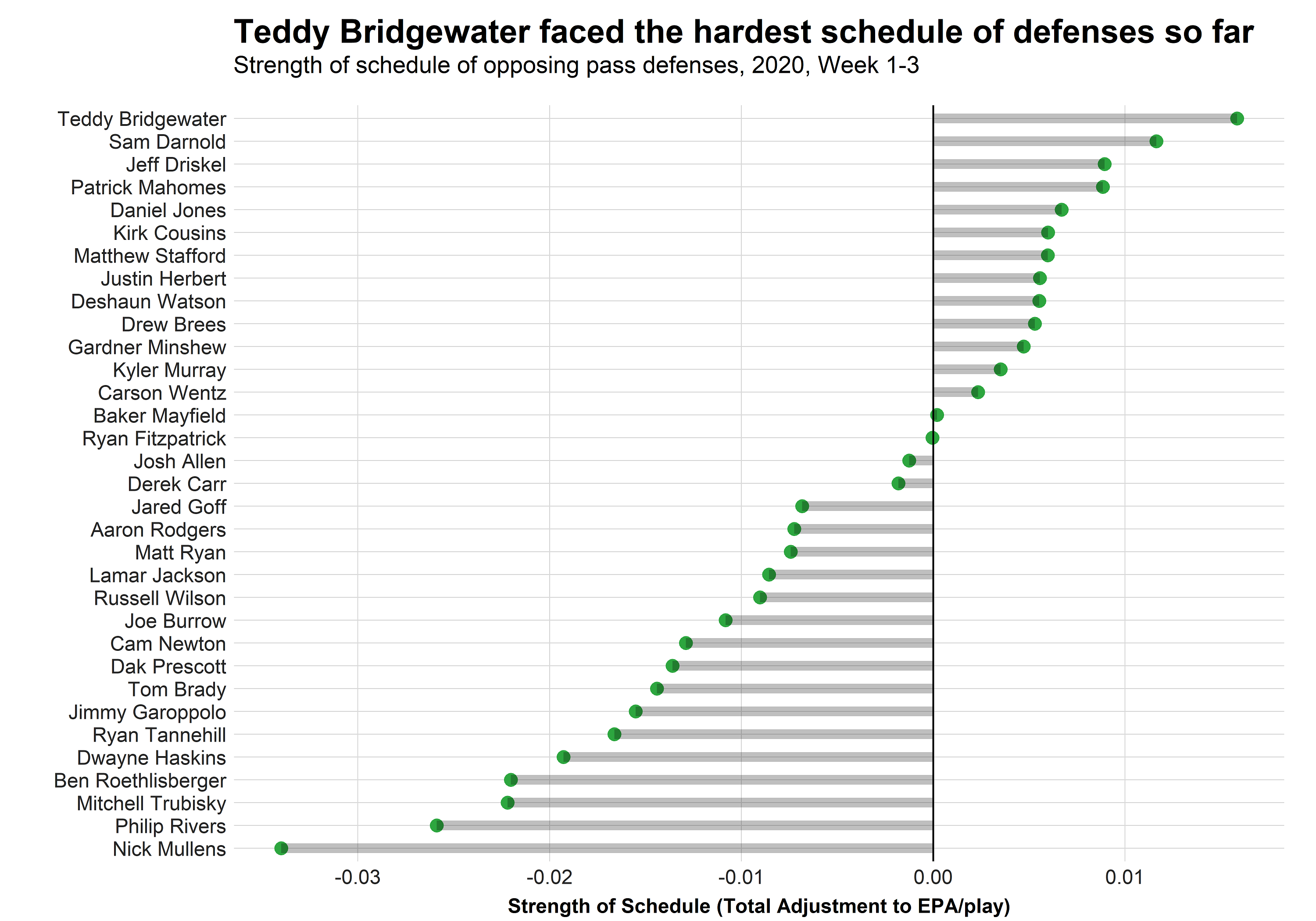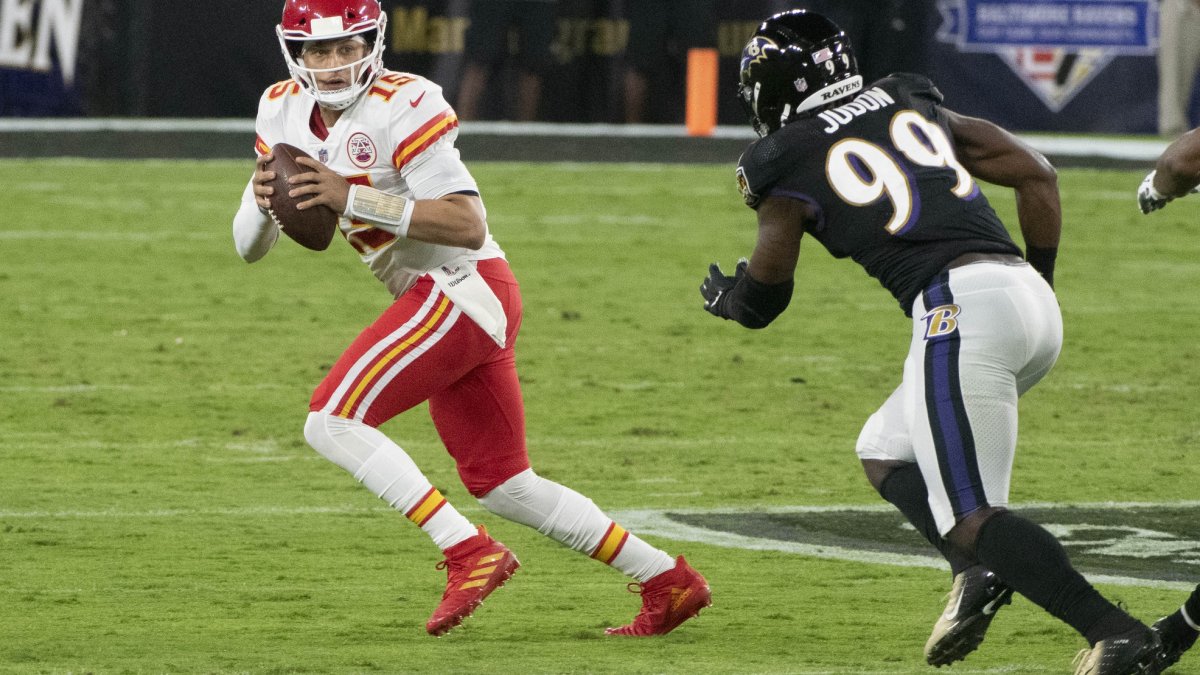Another week has passed, with last week's top three MVP candidates all keeping their untarnished records with yet more stellar performances. How far is the top trio away from the rest of the league? And what about our projection for Lamar Jackson after a “rough” game on Monday?
Editor's note: ELITE subscribers can view player grades, advanced statistics, positional snap counts and more in Premium Stats 2.0. Subscribe today for access.
Before we get to the rankings, here is a short overview of the methodology:
- We trained a model to predict the winner of the MVP award at the conclusion of the regular season. The model is based on three regular-season parameters:
- The number of wins (and how that ranks across the league)
- Rank in the division
- Expected points added per play (and how that ranks across the league)
- Since the model works with regular-season stats in hindsight, we need to simulate the remaining games of the season in order to feed the model. We invoke our weekly win-total simulations as well as a Bayesian Updating method to simulate each quarterback's EPA per play in 2020.
- During the season, we update our beliefs on all quarterbacks with Bayesian Updating, incorporating up-to-date EPA per play and making adjustments based on both the PFF passing grade and the quality of defense faced.
- Using these updated beliefs, we can simulate the EPA per play for the remainder of the season for each quarterback.
- The number of wins and whether a QB wins his division is obtained from our weekly win-total simulations.
Additionally, it is very important to remember that we are not ranking who would win the MVP if the season ended right now. The threat of COVID-19 aside, the season will last 16 games for each team, and thus we are projecting who will have the best stats when the regular season concludes in early January.
Defense adjustments
After three weeks, it makes sense to look at our defense adjustments in a more detailed way.
These adjustments are obtained by looking at how defenses influenced offensive performance during the first three weeks, but they also acknowledge that offensive performance in a game is driven more by the offense than the defense. For more details on the method, you can read this article, in which we first introduced adjusting for defense by considering defensive play as a random effect in a mixed-effects model. We should note that after three weeks of play, there is also still a built-in preseason prior, which will gradually vanish in the following weeks. The following chart shows the defense adjustments after three weeks.

Derived from the adjustments for each defense, the following chart can be interpreted as the quarterbacks' strength of schedule of opposing pass defenses. It shows the total adjustment to EPA per play that is made for each quarterback when projecting the remaining season. Positive values mean the quarterback has played difficult pass defenses while negative values mean the quarterback has played easier pass defenses.

We should note that the adjustments are fairly small, as most signal-callers are within an adjustment delta of 0.03 EPA per play. That's hardly enough to differentiate between two spots when ranking quarterbacks by EPA per play.
The adjustments for the best and worst defenses will grow larger over the course of the season when we start to become more certain about which defenses are good and which defenses aren't.
After Week 3, it is safe to say that this year's MVP will not come from Chicago or the Los Angeles Chargers, as both have already had to change starters. Here are this week's projections.
The favorites
Exclusive content for premium subscribers

WANT TO KEEP READING?
Dominate Fantasy Football & Betting with AI-Powered Data & Tools Trusted By All 32 Teams
Already have a subscription? Log in



 © 2025 PFF - all rights reserved.
© 2025 PFF - all rights reserved.